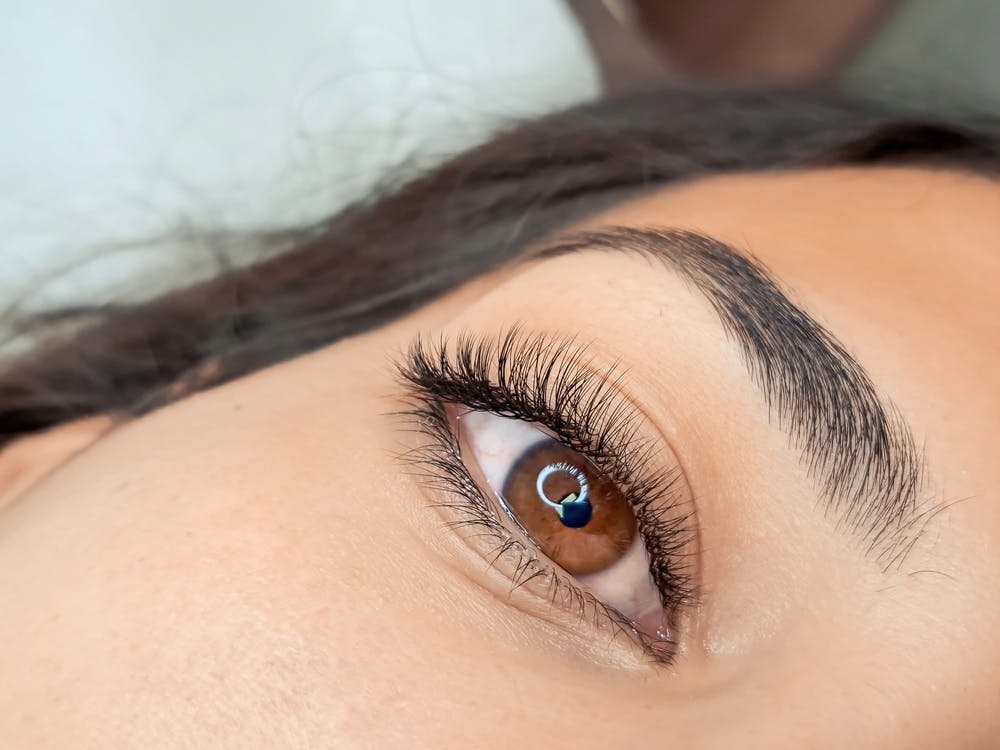
Are you looking to rejuvenate your appearance but wary of traditional surgical interventions? Brow lift surgery has evolved significantly, driven by both patient preferences and technological advancements. The quest for a more youthful brown position, rejuvenated facial features and a refreshed look has given rise to a range of brow lift options, from non-invasive to minimally invasive techniques.
With renowned experts Dr. Mark Glasgold and Dr. Robert Glasgold contributing their deep understanding and extensive experience in gold standard facial plastic surgery, your brow lift experience promises to be a rewarding one. Their expertise will help you navigate the complex array of choices, enabling you to make informed decisions to help you obtain your aesthetic goals that fit your lifestyle.
Exploring Brow Lift Alternatives: Why Seek Other Options?
Patients today often consider alternatives to traditional brow lift surgery to refresh their appearance without the drawbacks of a standard brow lift, such as invasiveness and recovery time.
Some patients are worried about surgical risks or scarring. They want methods to lessen the signs of aging that don’t require a long recovery. Others may have minor skin laxity that doesn’t need a full lift. For them, procedures like Botox or fillers can offer a quick lift and smooth out small furrows and lines.
Individuals are often looking for results that match their unique facial structure better. A standard brow lift can provide a significant lift, but may not always meet with personal aesthetic goals.
Patients who want to enhance other facial areas along with the brow might prefer less invasive options. For instance, combining a brow lift with a facelift or neck lift could give a more comprehensive rejuvenation, but not everyone is willing to undergo multiple surgeries.
Patients are often drawn to alternative methods to a traditional brow lift for reasons like reduced surgical risks and downtime, and desiring subtle, individually-tailored enhancements. As cosmetic procedures advance, these alternatives may offer different levels of intervention that can suit various preferences and needs.
Common reasons for seeking brow lift alternatives include:
- Concerns over surgical risks and scarring
- Desire for less invasive skin treatments
- The need for subtle improvements
- Preference for personalized results
- Combining lift procedures without multiple surgeries
1. Non-Surgical Brow Lift Treatments
Non-surgical brow lift treatments are becoming popular for those looking to enhance their forehead and eye areas without surgery. These treatments offer a skin and soft tissue lift with less downtime than surgical lifts.
Non-surgical methods can use suture techniques to anchor soft tissue and elevate the brows. They can be done with only topical or local anesthetics, avoiding the need for general anesthesia. Instead of scalpels, these methods use needles to place the suture material under the loose skin. This allows patients to recover quickly. Other options include injectables and laser therapy.
Key non-surgical treatments include:
- Injectable neuromodulators to relax muscles that lower the brows.
- Dermal fillers to gently lift the brow tissues.
- Thread lifts using absorbable sutures material to lift the excess skin.
- Laser therapy and radiofrequency to increase collagen production and tighten skin.
These treatments carry a low risk of scarring and fewer complications than surgical brow lifts. They suit those with mild drooping of the brow as well as those who prefer a shorter recovery period.
Non-surgical options are versatile and can complement other cosmetic procedures like a facelift to help promote facial harmony. Surgical treatment may be necessary for significantly sagging skin, as non-surgical methods have a limit to the lift they can provide. However, these new approaches to brow lifting offer effective results with fewer downsides.
2. Minimally Invasive Brow Lift Procedures
Minimally invasive brow lift techniques offer an alternative to traditional brow lift surgery. These procedures use small incisions, often hidden within the scalp or just above the brow, which may reduce visible scarring.
A common method involves using sutures to lift the skin and underlying tissues. The aim is to elevate the brow for a rejuvenated look while minimizing damage and shortening recovery time.
Traditional brow lift surgery usually requires a larger incision and more skin lifting, which means a longer recovery. The plastic surgeon adjusts skin and deeper tissues to create the lift, which carries more risk and recovery time.
Minimally invasive options also allow precise targeting of specific areas. Advances such as endoscopic equipment, with a small camera, give surgeons a better view of internal structures while allowing for a less invasive procedure.
3. Natural Brow Lift Techniques
In the world of beauty, many people seek a natural-looking lift for their brows. These methods differ from traditional brow lift surgery, which adjusts the facial tissue under the skin. Natural options are non-invasive and appeal to those who prefer subtle changes.
Natural methods to achieve a lift include:
- Facial exercises to strengthen the muscles around the brows.
- Topical treatments, like serums and creams, that firm up the skin.
- Micro-current therapy that uses gentle electrical stimulation for muscle tone.
When compared to surgery, which involves skin and facial tissue manipulation for immediate and noticeable changes, natural techniques have minimal recovery time. However, the results are not as striking and develop slowly.
4. Advancements in Brow Lift Technology
Brow lifts have evolved considerably, offering new methods that are less invasive and provide more benefits compared to traditional surgery. Previously, a brow lift would require a lengthy cut along the hairline, leading to concerns about scarring and recovery time. The latest techniques are more refined and involve fewer, smaller incisions.
Modern procedures use small suture techniques to raise the brow with precision. These sutures, placed in key areas, work on the deeper layers of skin to create a natural look while reducing telltale signs of surgery. Using needles with more precision improves comfort and speeds up recovery time.
Endoscopic technology uses a camera which is inserted through tiny cuts located discretely within the hairline. The surgeon watches on a screen to perform the lift accurately, causing less damage to the skin and tissues. This means less swelling and faster healing for the patient.
These advanced procedures are sometimes combined with non-surgical treatments for an all-encompassing facial rejuvenation. For example, injectables can enhance the effects of the suture lift by smoothing out lines like nasolabial folds or adding volume where necessary.

Making an Informed Choice: Evaluating Brow Lift Alternatives
When considering a brow lift, patients may encounter various options available to them. To make an informed decision, the following factors should be taken into account.
Assess the Procedure’s Invasiveness
Traditional brow lifts usually require large incisions near the hairline. Endoscopic brow lifts, on the other hand, involve smaller cuts and an endoscope, or camera, to assist the surgeon. The latter option results in less noticeable suture lines and may shorten the recovery period.
Longevity and Effectiveness of the Lift
It is crucial to consider the lift’s duration and the effect it has. Less invasive methods heal faster but may not maintain the results as long as the traditional techniques. Discuss your goals and how long you expect the results to last with your surgeon.
Suture Technique
The technique used for sutures significantly affects the outcome. Several suture techniques exist; all aim to lift and secure the underlying layer of skin effectively. The choice of suture will influence the brow’s appearance and how the facial skin adjusts to its new position.
Understand the Recovery Process
A less invasive procedure may mean a quicker recovery. Regardless, caring for suture lines and the skin is essential afterward. Plan to take time away from work and social engagements to heal properly.
Review Past Results
Looking at before-and-after pictures of other patients can provide an insight into what can be achieved. Results will differ depending on individual factors, such as skin elasticity and age.
By contemplating invasiveness, the longevity of the lift, suture technique, recovery time, and realistic expectations, patients can choose a brow lift that suits their needs. Remember to discuss all these aspects thoroughly with your surgeon.
Embarking on the journey to rejuvenate your appearance can be transformative. The landscape of brow lift surgery offers a multitude of pathways, and each choice comes with its distinct advantages. To navigate these options with confidence, seeking tailored advice from seasoned professionals is key.
Let Mark and Robert Glasgold guide you through the latest innovations and personalized solutions in brow lift non-surgical and surgical procedures. Their expertise is your roadmap to a refreshed and natural look. Schedule your consultation today and take the first step towards a revitalized you.



